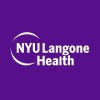
Risk for Short-term Adverse Events in Older Emergency Department Users
Older PeopleHealth Care2 moreThis study evaluates the association between risk levels (i.e.; low, moderate and high) of Emergency Room Tool (ER2) and length of stay in older Emergency Room Tool (ER) users admitted to the medical or surgery wards of the Jewish General Hospital.

Glycemic Optimization On Discharge From the Emergency Room
Diabetes MellitusContinuous glucose monitors can help people with diabetes avoid blood sugar levels that are either dangerously high or low. This study evaluates whether continuous glucose monitoring after discharge from the emergency room can help people with type 1 or type 2 diabetes avoid repeat emergency room visits, achieve improved blood sugar control, and feel less distressed about managing their diabetes.

CT C-spine Audit and Feedback
Cervical Spine InjuryEmergencies1 moreThis is a prospective quality improvement study to assess the effect of using an audit-and-feedback process for emergency providers on utilization of computed tomography of the cervical spine. The objective of this study is to determine whether providing repeated individualized feedback on CT C-spine utilization to emergency providers alters their practice pattern and reduces overutilization. We hypothesize that emergency providers who receive individualized feedback regarding their CT C-spine utilization on a regular basis will alter their practice pattern to reduce overutilization of this imaging study.

Impact of Prokinetic Use After Emergency Intestinal Anastomosis on Postoperative Clinical Outcomes...
Prokinetic Use After Emergency Intestinal AnastomosisProkinetic drugs used to accelerate healing of intestinal anastomosis of urgent cases which not prepared preoperative by increase intestinal motility and gastric emptying and decrease postoperative adhesions They are many types of prokinetics as cholinergic agonists, dopamine antagonist, serotonergic agonists and macrolides Agents of prokinetics administered immediately post operation and at the time of hospitalization

Emergency Medicine Palliative Care Access
Advanced CancerEnd Stage Organ FailureThis is a two-arm, multi-site randomized controlled trial of 1,350 older adults (50+ years) with either advanced cancer (defined as metastatic solid tumor) or end-stage organ failure (New York Heart Association (NYHA) Class III or IV Heart Failure, End Stage Renal Disease defined as GFR < 15 ml/min/m2; or Global Initiative for Chronic Obstructive Lung Disease (GOLD) Stage III or higher or oxygen-dependent chronic obstructive pulmonary disease (COPD) defined as FEV1 < 50% or the mMRC dyspnea scale) who present to the Emergency Department (ED), along with 675 of their informal caregivers. Investigators will compare the effectiveness of two distinct palliative care models: a) nurse-led telephonic case management; and b) facilitated, outpatient specialty palliative care.

Medico-social Mediation on the Prevention of the Return to Emergencies Among People in a Precarious...
Social IsolationThis research aims to evaluate a new mode of care for precarious public through a medico-social mediation device after emergencies, with the aim of improving their care and to prevent possible complications. The main objective is to evaluate the effectiveness of management by a medico-social mediation device set up within 48 hours after leaving emergency on the 90-day emergency readmission rate. people living in precarious situations. prospective randomized interventional trial with two arms. Patients will complete questionnaires assessing precariousness, quality of life, health literacy, and time perspective. Eligible patients (726 subjects) are randomized : control group (usual management) or experimental group (patient is contacted within 48 hours by a medico-social mediator familiar with the territory), and followed for 90 days by the latter, in order to optimize and secure the care path. Readmissions are identified from emergency database and Regional Emergency Terminal and documented. Patients in the experimental group benefit from the support of a local health mediator who carries out a diagnosis of the person's needs in order to follow his or her care path in an optimal way. It implements and ensures with the patient and his entourage the follow-up of the care through his network of professionals of the social sector and the health. The study will be under the responsibility of a multidisciplinary scientific committee experienced in public health, epidemiology and social psychology of health, in the field of emergencies, precariousness and medico-social mediation, and excellent knowledge. territories concerned.

Strategy for Unstable Coronary Plaque in Patients Presenting to Emergency Department for Chest Pain...
AtherosclerosisPrimary prevention of coronary disease and especially its major complication, inaugural myocardial infarction, is based on any prodromal symptoms identification and on risk profile establishment. About 50% of myocardial infarctions are caused by an unstable non-stenosing plaque, asymptomatic before the event since without significant reduction in coronary flow, particularly during a stress test or during stress imaging. Study purpose is to set up, in medical emergency department, check-up unit and cardiology department, a primary prevention strategy articulated around a routine examination: calcium scoring. The latter makes it possible to categorize patients according to their risk of generating atheromatous plaques and to classify them into several risk levels (groups) according to their score: low (<40th percentile), intermediate (between the 40th percentile and the 65th percentile: group III) or high risk (>65th percentile, group IV). 18F-Na PET scan can mark unstable coronary plaques. For the intermediate risk population who would demonstrate within 6 to 18 months after first calcium score either an increase of percentile of more than 20% or an increase above 20 points of the calcium score and for high risk population, 18F-Na PET scan will be recommended and repeated 6 months later. Secondary prevention treatment will then be administered in the event of an abnormal examination.

Effect of Family-centered Perioperative Care for Anesthesia (FPCA) on Incidence of Emergency Delirium...
Postoperative ComplicationsChild2 moreEmergency delirium (ED) is one of the most common postoperative complications in pediatric patients and is associated with an increase of hospitalization time, healthcare costs, and increased incidence of postoperative maladaptive behaviors (POMBs). There is no clear pharmacological or non-pharmacological interventions that are effective in reducing the incidence of ED or POMBs. Therefore, the investigators aimed to assess whether family-centered perioperative care for anesthesia (FPCA) reduce the incidence of ED or POMBs in children compared with conventional preoperative pharmacological interventions.

CPR Quality in Via Ferrata Rescues
ResuscitationPrehospital EmergencyThis study evaluates the effectiveness of CPR during via ferrata rescues, focusing on response quality and outcomes in challenging outdoor settings.

Two Ratios of Propofol-ketamine Admixture for Rapid-sequence Induction Anesthesia for Emergency...
HypotensionInduction of AnesthesiaHypotension during anesthesia is associated with serious organ failure and death. The most critical period for intraoperative hypotension is the postinduction period during which, one-third of intraoperative hypotension occurs. Post-induction hypotension has many contributing factors; however, it is closely related to anesthetic drugs. Therefore, manipulation of induction agents makes post-induction hypotension likely preventable. Emergency laparotomy is a critical category of surgery whose patients are usually hemodynamically compromised and prone to post-induction hypotension; furthermore, these patients are usually at high risk of aspiration of gastric contents and require rapid-sequence induction of anesthesia and optimum intubating conditions. Thus, induction of anesthesia for emergency laparotomy requires meticulous balance between achievement of adequate hypnosis and maintenance of stable blood pressure. Propofol is the commonest hypnotic agent worldwide. However, it is usually associated with hypotension especially in compromised patients. Ketamine produces dissociative anesthesia and sympathetic stimulation which provides more stable hemodynamic profile; however, ketamine is not widely used as a routine hypnotic because it produces psychomimetic effects such as delirium and emergence agitation. Nevertheless, ketamine still has a role in induction of anesthesia in patients with shock and during procedural sedation. Ketamine is also used as analgesic adjuvant during general anesthesia. Propofol/ketamine admixture (ketofol) was introduced in anesthetic practice aiming to compensate the side effects of the two drugs and to provide, consequently, the desired balance between adequate hypnosis and hemodynamic stability. Ketofol is currently used with a diversity in the ratio between the two drugs which ranges between 1:1 and 1:10 between ketamine and propofol. Despite its frequent use in sedation and complete anesthesia, most of the available literature for comparisons of different ketofol mixtures was restricted to procedural sedation whose results are not applicable in induction of anesthesia due to the different desirable level of hypnosis and recovery. Therefore, the best combination of the two components of ketofol for induction of anesthesia is unknown
